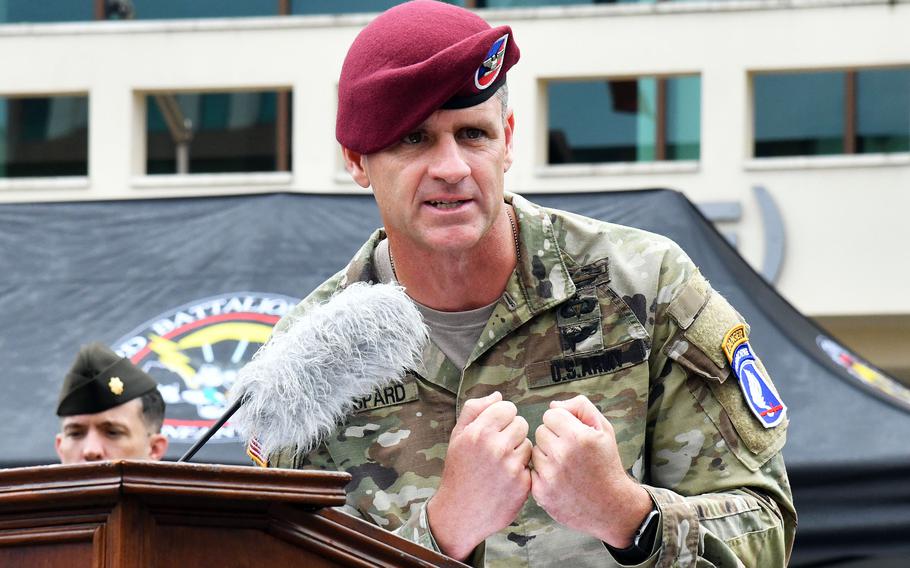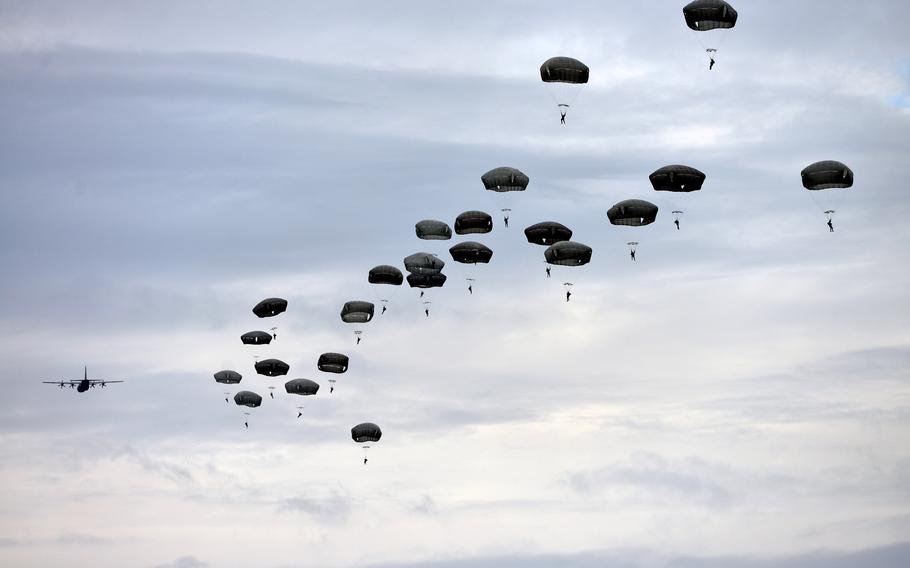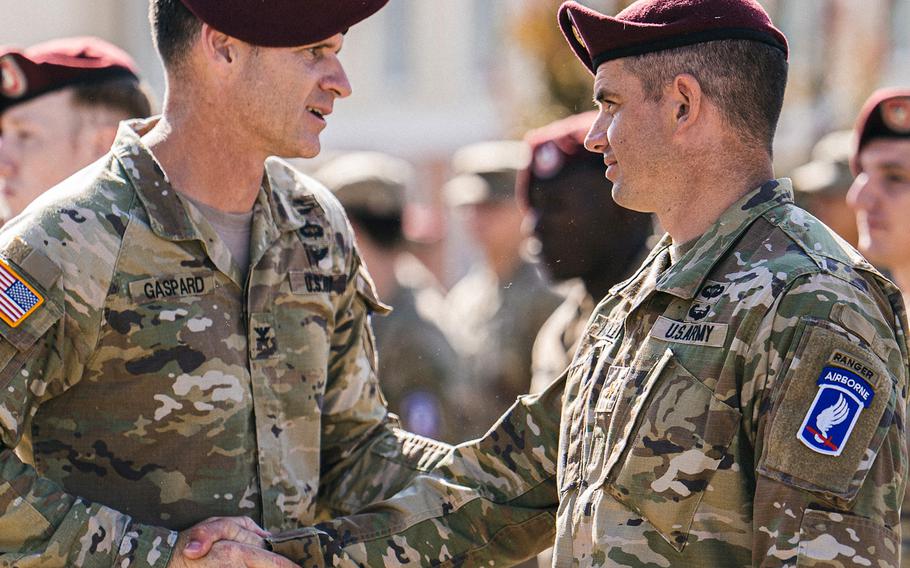
Army Col. Joshua Gaspard, leader of the 173rd Airborne Brigade, addresses the audience at his change of command ceremony in Vicenza, Italy, on July 6, 2023. (Paolo Bovo/U.S. Army)
VICENZA, Italy — Second Lt. Joshua Gaspard boarded the 173rd Airborne Brigade’s first plane headed to the Iraq War in 2003, jumping into the north of the country just 21 days after arriving in Vicenza on his very first Army assignment.
Two decades later as a colonel, the Texas native is the latest commander of the storied brigade.
“When I walk in front of a mirror and I see this rank, I think it’s a mistake because I still envision myself as a 25-year-old lieutenant that was first stationed here,” Gaspard said in an interview last week at his Vicenza headquarters. “That’s the mental image I have of myself now when I go out and do pullups or run with some of these young paratroopers.”
Gaspard assumed command July 6. He takes the reins of a unit focused on very different threats from the ones that defined the first phase of his career.
The battlefields of Afghanistan and the Middle East, where the U.S. waged a counterinsurgency against an enemy lacking high-tech capabilities, have given way to a revival of great power competition.

U.S. Army paratroopers from the 173rd Airborne Brigade and Serbian counterparts descend toward the Baku drop zone near Belgrade, Serbia, in 2017 after jumping from a pair of C-130 aircraft. (Michael Abrams/Stars and Stripes)
In Europe, that means preparing to counter Russia, whose military can engage in electronic warfare, launch precision missiles and target command and control setups.
One notable task for Gaspard is giving lower-level units more autonomy to operate without engaging in the constant communication with higher headquarters that was taken for granted in Iraq and Afghanistan.
He said soldiers need to be able to hide in plain sight, and that means not using certain equipment that emits electronic signals, which adversaries like Russia can pick up.
As the 173rd Airborne trains for such situations, the aim will be to provide the larger Army with a strategy that showcases how ground units can put such a plan into action.
“We owe some solutions from our perspective and our vantage point to make us not susceptible to certain attacks,” he said.
Gaspard’s ascension comes as the service’s brigade commanders are under increased scrutiny. Recent scandals have derailed the careers of several of them, raising questions about the quality of leadership at that level.
When asked how he plans to avoid such pitfalls, Gaspard said he intends to bring a sense of humility to the job.

Col. Joshua Gaspard, the 173rd Airborne Brigade commander, left, welcomes new paratroopers during a patching ceremony July 26, 2023, at Caserma Del Din in Vicenza, Italy. (Jose Lora/U.S. Army)
He seeks to build a culture in which subordinates feel free to speak up if things aren’t running as they should. His wife, Andrea, a fellow West Point graduate and also a former 173rd soldier, also helps keep things on track, he said.
“I think it’s having people around you prepared to tell you hard things,” Gaspard said. “Build a collation around you that is candid, open, honest, is confrontational at times and feels empowered to be so.”
Taking command of the 173rd comes with the added significance of being surrounded by constant reminders of the sacrifices of soldiers Gaspard knew personally.
Last month, he joined soldiers at a physical training event coinciding with the anniversary of 1st Sgt. Mike Curry’s death in Afghanistan on July 23, 2007.
The dining facility at the Army’s Caserma Erderle is named after Curry, who was Gaspard’s first platoon sergeant when he was a lieutenant in Vicenza.
And on July 27, the 173rd’s 1st Squadron, 91st Cavalry Regiment paused to recall Maj. Tom Bostick on the anniversary of his 2007 death in Afghanistan.
A legendary figure in the brigade, Bostick received the Distinguished Service Cross for his heroism in Afghanistan. When Gaspard was promoted to captain in 2005, Bostick was the first person he saluted as they crossed paths at Kandahar airfield.
“A lot of connective tissue with this unit,” Gaspard said.
In the conference room at 173rd headquarters, paintings of key moments in the brigade’s history hang on the wall. One of them depicts the C-17 that carried Gaspard into Iraq.
After that deployment, Gaspard met the artist, James Dietz, who signed the back of a printed copy of the painting.
When Dietz asked what he should write, Gaspard replied: “Welcome to the Army.”